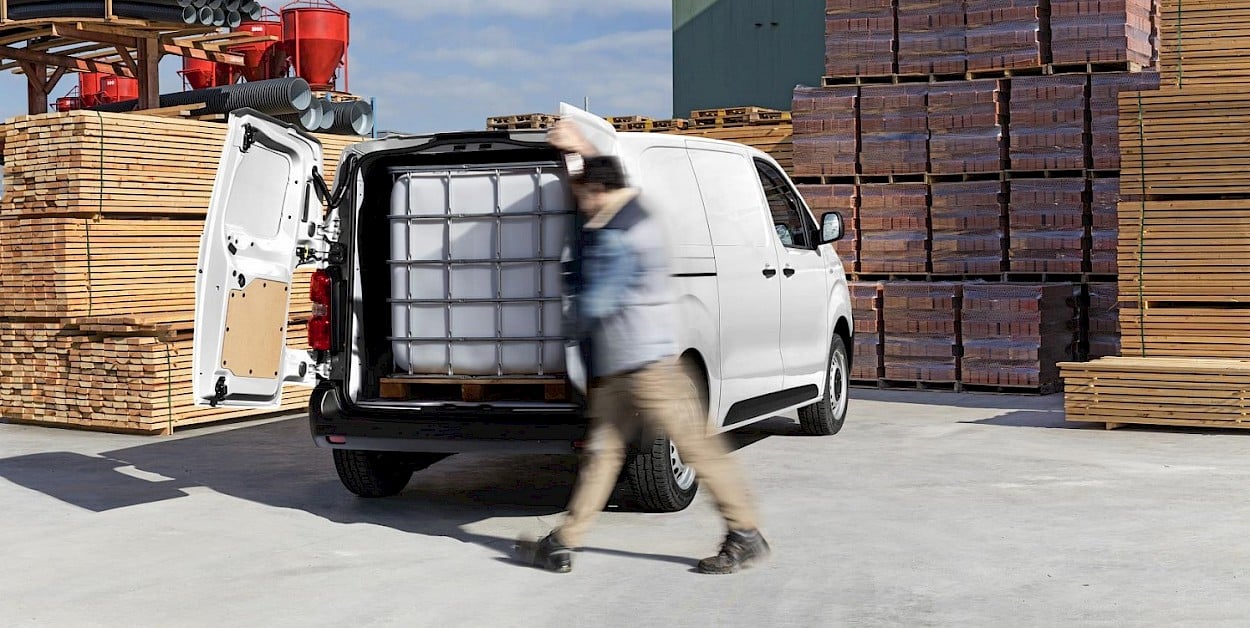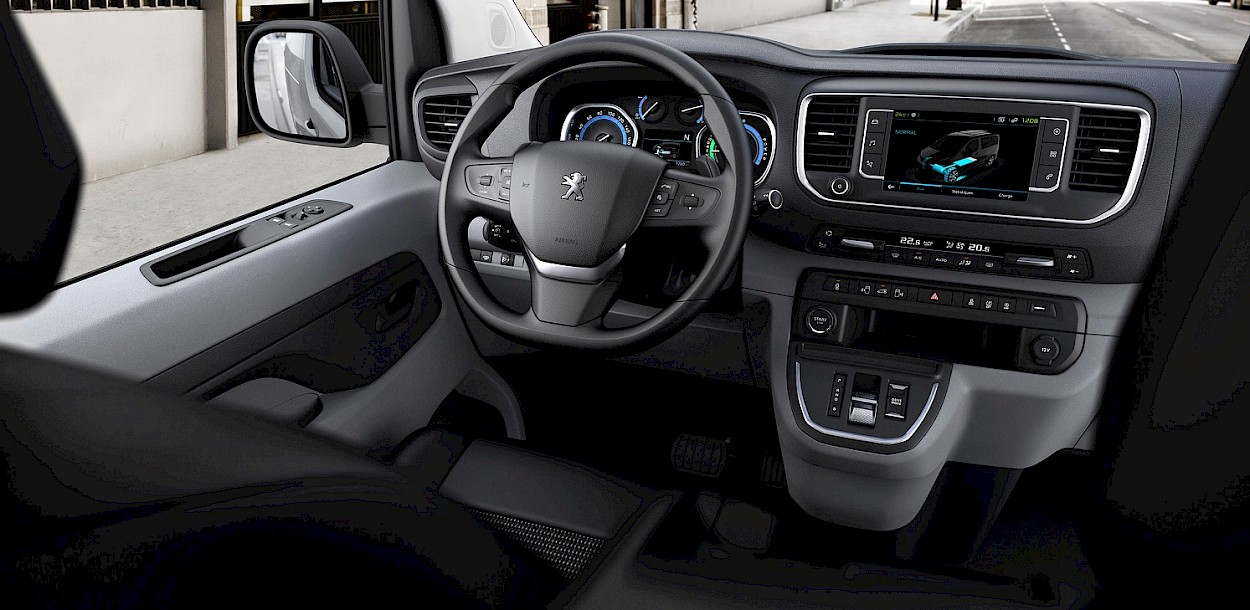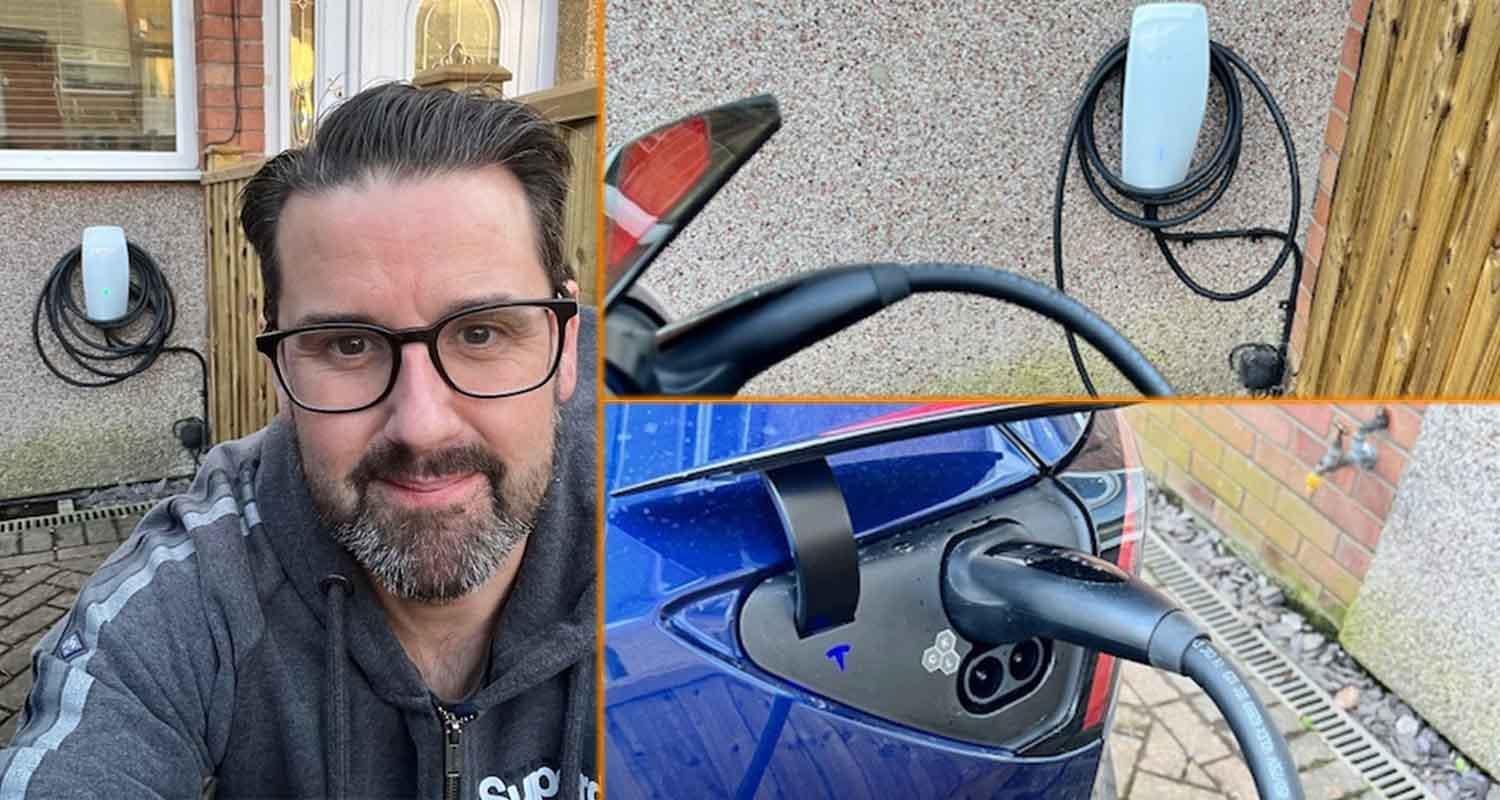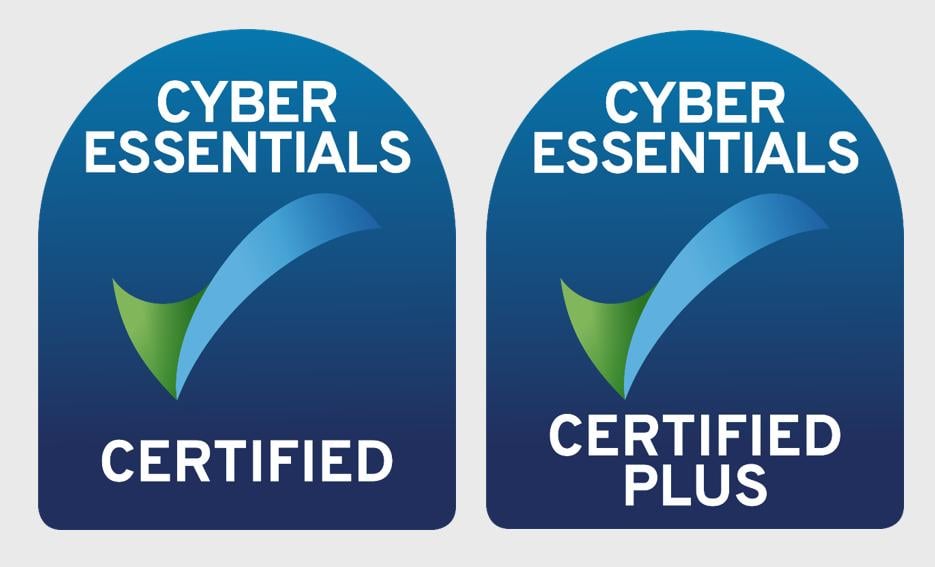The electric vans are coming and they're here to stay. This is why.

Electric vans haven’t exactly been at the forefront of EV growth, but new models are coming thick and fast. We think they’re ready to change the commercial vehicle sector and our editor Danny Morgan is here to explain why.
Even though electric car sales are still relatively small compared to petrol and diesel, it’s fair to say EVs have cracked the car market. Both month on month and year on year sales are regularly up and the EV market share nearly doubles each year.
Other than pioneers like the Nissan eNV200, new electric vans have been few and far between. But lately it seems manufacturers can’t get enough electric van action with Peugeot, Vauxhall, Citroen, Volkswagen and Nissan all announcing new models in 2020.
We might be at the start of the electric van journey, and there are still hurdles to overcome, but I think they are here to stay, and the change will arrive sooner than you think. Here’s why.
Change is in the air

The shift to electric has already begun of course, but the speed of that change is ramping up particularly in the commercial sector.
Air quality is high on the agenda of many governments, but also customers and this is ultimately who businesses listen to.
Sure, customers aren’t exactly flocking to electric vans right now, whether that’s through their choice of retailer or delivery firm or if you’re a fleet manager. But when your choice consists of diesel-powered vans or diesel-powered vans then there’s not much you can do.
But we won’t be left with that choice forever. In fact, Amazon (the world’s largest retailer) has already ordered 100,000 fully electric delivery vehicles from Rivian. It’s a drop in the ocean compared to the world’s commercial fleet but it’s a big sign of intent.
On the local level, even smaller businesses are already making the shift. Simon Brace, owner of Lakes Electric Delivery Service, runs a Nissan eNV200 and his business ethos revolves around the concept that cleaner, quieter and cheaper delivery is not only possible but something that customers want if given the choice.
“In the last 12 months since switching to an electric van I’ve definitely noticed a large increase in customers wanting a greener alternative. I’m the first and only 100% electric delivery service in Cumbria and the North West.”
Simon says the savings for his business have been huge since moving to an electric van:
“Servicing and maintenance costs have fallen off a cliff. The most I’ve spent in three years was a full set of tyres and ‘fuel’ costs average about a third of what I was paying before with a diesel. That’s based on charging on a low-cost tariff at home and then a few rapid charges during the day.
“If all my charging was at home, then fuel costs would be just 20% that of the diesel.”
The economics will drive the transition
As Simon has shown with his business, moving to a zero-emissions van is not just an ethical or environmental choice – it also makes good business sense.
Either way, there is big money in the commercial vehicle sector. The global market was valued at $1.32 trillion in 2017, so even a small slice of this is worth going for. Understandably, manufacturers want a bigger piece of that pie and if they can sell new commercial vehicles that save a business money compared to a diesel equivalent, then that’s a compelling offering and an advantage over their competition.
Most businesses won’t make the move to electric unless it makes financial sense. But that’s exactly why they will start to do so.
While internal combustion engine (ICE) commercial vehicles are arguably cheaper to buy (although that’s debatable anyway), they are expensive to maintain and run. In fact, the running costs are likely to increase over the lifetime of the vehicle because of wear and tear.
Think about it:
- Fuel costs are high and rising (over the long term)
- Maintenance costs are high – there are lots of moving parts to go wrong in an ICE vehicle
- Tax is high and increasing on the most polluting commercial vehicles
- The cost to drive in urban areas, where many commercial vehicles operate, is increasing
Electric van vs diesel van costs
In the table below, we’ve compared the cost of two similar vans to see where exactly the electric van comes out on top.
| LEASE COST COMPARISON | ||
| Vehicle | Renault Kangoo diesel | Renault Kangoo Z.E 33 I Business electric |
| Monthly lease (36 months, 8,000 miles/year, 3-month deposit) | Deposit: £621.48 | Deposit: £615.48 Per month: £205.16 |
| Annual fuel cost (8,000 miles) | £1,072 Over 36 months: £3,216 based on £1.12/litre | £83 Over 36 months: £249 based on 5p/kWh off-peak only charging |
| Cost per mile | 13.4p | From 1.5p |
| Tax | £515 VED | £0 |
| Maintenance | £1,167.72 | £909 |
| Lease cost after 36 months including running costs | £12,977.96 | £9,159.24 |
| PURCHASE COST COMPARISON | ||
| Vehicle | Renault Kangoo diesel | Renault Kangoo Z.E 33 I Business electric |
| List price | From £16,650 | From £24,480 |
| List price after incentives | £16,650 | £16,480 (after £8,000 Government grant) |
| Annual fuel cost (8,000 miles) | £1,072 Over 36 months: £3,216 based on £1.12/litre | £83 Over 36 months: £249 based on 5p/kWh off-peak only charging |
| Cost per mile | 13.4p | From 1.5p |
| Tax | £515 VED | £0 |
| Maintenance | £1,167.72 | £909 |
| Finance cost after 36 months including running costs | £21,548.72 | £17,638 |
| *list price from Renault website; lease costs from WhatCar? Leasing; fuel costs from NextGreenCar; maintenance costs courtesy of The Telegraph and Cap HPI (data correct as of 16/6/2020). | ||
Using the Renault Kangoo, which is available as diesel and electric variants, we can see the list price is higher without the £8,000 Government grant.
However, the grant is available and electric vehicle costs are coming down all the time with price parity expected in the next 3-5 years if not sooner.
Even so, good lease deals on electric vans are available right now and we found the electric Renault Kangoo was cheaper in some cases. This can fluctuate, so we simply picked the cheapest lease deal we could find for each vehicle on WhatCar? on that day.
Clearly, fuel and tax are where the biggest savings will ultimately be made. Electric vehicles are exempt from Vehicle Excise Duty (VED) compared to £515 for the diesel Kangoo, but there’s also a huge £2,967 fuel saving over 36 months for the electric Kangoo based on 8,000 miles a year.
The electricity cost is based on off-peak charging only at a rate of 5p/kWh, but this is perfectly feasible. Even if we based the calculation on a more expensive tariff of 14p/kWh, the electric Kangoo would still only cost £231 per year compared to £1,072 for the diesel version.
Those are just some of the costs associated with a commercial vehicle, but let’s address them in more detail.
Fuel costs
Any fleet manager will be looking to save on fuel costs where possible. Fuel is by far the biggest overhead in a fleet and if you can save even a small percentage then that can soon add up.
Let’s assume you have a fleet of 100 vehicles that normally costs £1000 per vehicle per month in fuel. That’s £1.2million in fuel costs alone per year.
Imagine you could make a modest saving of £10 per vehicle per month on fuel. Across the year that would amount to a saving of £120,000 simply by reducing diesel fuel costs by £10… somehow.
The “fuel” savings on an EV would be much greater still as evidenced by the table above, so you can see why fleets are investigating the option of moving to electric.
Maintenance costs
For every minute a commercial is not on the road, it is not making money or being useful not to mention you’re potentially paying drivers who aren’t able to do anything. Commercial vehicles these days are pretty reliable, but the sheer number of moving parts and components in a diesel van still means they are more likely to break down or require maintenance compared to the equivalent EV.
A commercial vehicle will require a service and/or oil change every year typically, while the equivalent electric vehicle would only be serviced after 18,000 miles, with only the washer fluid being changed and basic checks carried out.
It should be pointed out that while EVs don’t tend to malfunction, the costs could be quite high when they do depending on what has gone wrong of course. I’d expect this to change as EVs become the main method of transportation and repair knowledge increases and replacement part costs come down.
Less wear and tear
In addition, electric vehicles make use of regenerative braking. This is where instead of using conventional brakes, an electric vehicle slows down considerably when lifting off the accelerator and the kinetic energy usually lost in a conventional car is recovered by the electric motor and into the battery.
This helps keep the EV efficient, but it also means the friction brakes are used far less often. Less use means less wear and tear and therefore lower maintenance costs.
In fact, estimates suggest an electric vehicle fleet could save as much as 23% on servicing and maintenance alone over three year or 60,000 miles.
Tax
This one is easy to explain. Electric vehicles are currently exempt from Vehicle Excise Duty. Although this isn’t a permanent change, the road tax will likely remain low for a while yet to encourage more fleets to make the transition to electric.
Congestion and emissions charges are increasing
London has had a congestion charge and an Ultra-Low Emissions Zone (ULEZ) for some time now. The ULEZ means the “dirtier” your vehicle is the higher the charge you will pay to enter a certain area of the city.
Other cities and urban areas are increasingly considering this as an option to reduce congestion and air pollution in town centres and so on. This could easily become a regular and high cost for any fleet that needs to enter urban areas, such as making deliveries to customers/retailers etc.
Some councils and local authorities are even considering banning diesel vehicles in centres altogether. If your business relies on getting into urban areas, then you may even find a diesel van is not able to get in at all in the near future.
Electric and commercial vehicles = perfect match

Putting aside the economical heart of the issue, it makes sense for commercial vehicles to be electric both from a usability and operational point of view. Here are a few reasons why:
1. Start/Stop driving
A lot (not all) of commercial driving in urban areas is of a stop-start nature, whether that’s because of congestion or due to stopping at businesses or homes for deliveries. In this scenario an EV is a lot more efficient at accelerating, but the regen braking means less energy is wasted when slowing down. In addition, an EV doesn’t “idle” in the way a petrol or diesel does, nor does it spew out harmful emissions when at a standstill.
2. Fleet vehicles can be charged overnight
If commercial vehicles are kept at the business premises overnight, then they can also be charged here overnight, ideally at an off-peak rate. This saves a fuel stop during a journey or a trip in the morning just to fill up – the electric vehicles are ready to go when the drivers arrive.
3. Better drive overall
Not much is made of the poor environment many commercial drivers find themselves in. Sure, many lorries are comfortable inside, but most commercial drivers are using a fairly typical diesel van. The suspension might be okay, but the acceleration is generally lacklustre, and the handling leaves a lot to be desired. Not only this but the driver is inhaling harmful emissions from the van regularly and studies have shown the toxic emissions can also enter the cabin.
An EV has better acceleration, better deceleration, a lower centre of gravity for better handling (arguably), and no tailpipe emissions for the driver to breathe in.
4. Better air quality
Commercial vehicles are a part of the fabric of our daily lives. There’s no getting away from the fact we need them. But that doesn’t mean we have to continue to use outdated technology that is actively harmful to our health. Moving to quieter, more efficient electric vans would help improve air quality by reducing pollution – especially as they often operate in the areas we work and live.
What are the remaining hurdles for electric vans?
Electric vehicles aren’t perfect, and they certainly aren’t ready for every commercial situation, although that will soon change.
Here are some of the issues that still affect electric vans:
1. Relatively low range
Currently the electric vans and other electric commercial vehicles available have a relatively low range from around 100 miles to 200 miles tops in the real world.
This is because batteries are still heavy and manufacturers must find a balance between range (bigger range means bigger batteries), cost of production (bigger batteries cost more) and weight/efficiency as a commercial van still has to be useful – a business won’t want a really cheap to run electric van if its loading capacity is compromised too much. What would be the point?
So, right now, electric commercial vehicles are more suited to smaller operational areas, shorter journeys, stop/start journeys (such as deliveries) and “last-mile” delivery.
There also long-range electric commercial vehicles on the way. The most well-known is the Tesla Semi which is predicted to have a range of 600 miles for the long-range model and 300 miles for the cheaper variant. It may not be the solution for all scenarios, but what vehicle is?
It’s likely diesel-powered trucks and lorries will still do the bulk of commercial journeys between cities/warehouses and inter-continental trips for the timebeing, but there’s no reason why EVs cannot make that final journey/delivery (what’s often called the “last-mile”) within a city itself. After all, it’s in urban areas where air pollution, congestion and noise pollution are most pronounced.
2. Higher list price
The list price on new electric vans is also still high compared to the ICE equivalent and it could be argued the range on these vehicles isn’t quite compelling enough to convince businesses to make the switch. We’d make the case that if an EV works for your business then you can recoup the initial cost quite quickly through fuel savings etc, but the initial price is still a major investment for many companies.
There is an £8,000 grant available for zero-emission commercial vehicles and, as demonstrated, lease prices can be very favourable for EVs.
3. Charging speed
While most electric vans will be charged overnight and ready for use in the morning, it’s likely commercial vehicles used over long distances will need to use a public charge point.
The charging speed, and the number of charge points, is increasing all the time but a commercial operation cannot afford to wait around for an available public charger or hang around for 30 minutes or so to get enough charge to make it back to the depot.
Although long-distance drivers have to take breaks by law (at which point they could also charge), this scenario won’t apply to everybody and you can bet logistics and haulage firms will be looking at vehicles that have the fastest charge times and access to a reliable charging network.
But electric vans are here to stay
No vehicle is perfect for every job, regardless of what is powering it. An electric van has positives and drawbacks just like a diesel will, and these will vary from model to model too.
There are challenges to overcome, but there’s an opportunity to change the way goods are delivered, reduce the harm done to commercial drivers, and reduce the cost of operating these vehicles as well as the cost to our health.
We don’t know how all these challenges will be overcome or how these opportunities will be realised exactly, but what we do know is the future is very bright for electric vehicles in the commercial sector and that future is much closer than you might think.
Resources
https://www.whatcar.com/advice/buying/should-i-buy-an-electric-van/n20241
https://www.autoexpress.co.uk/vans/98614/electric-van-guide-can-an-ev-van-work-for-your-business
https://www.telegraph.co.uk/business/sustainable-solutions/business-savings-with-electric-van/











